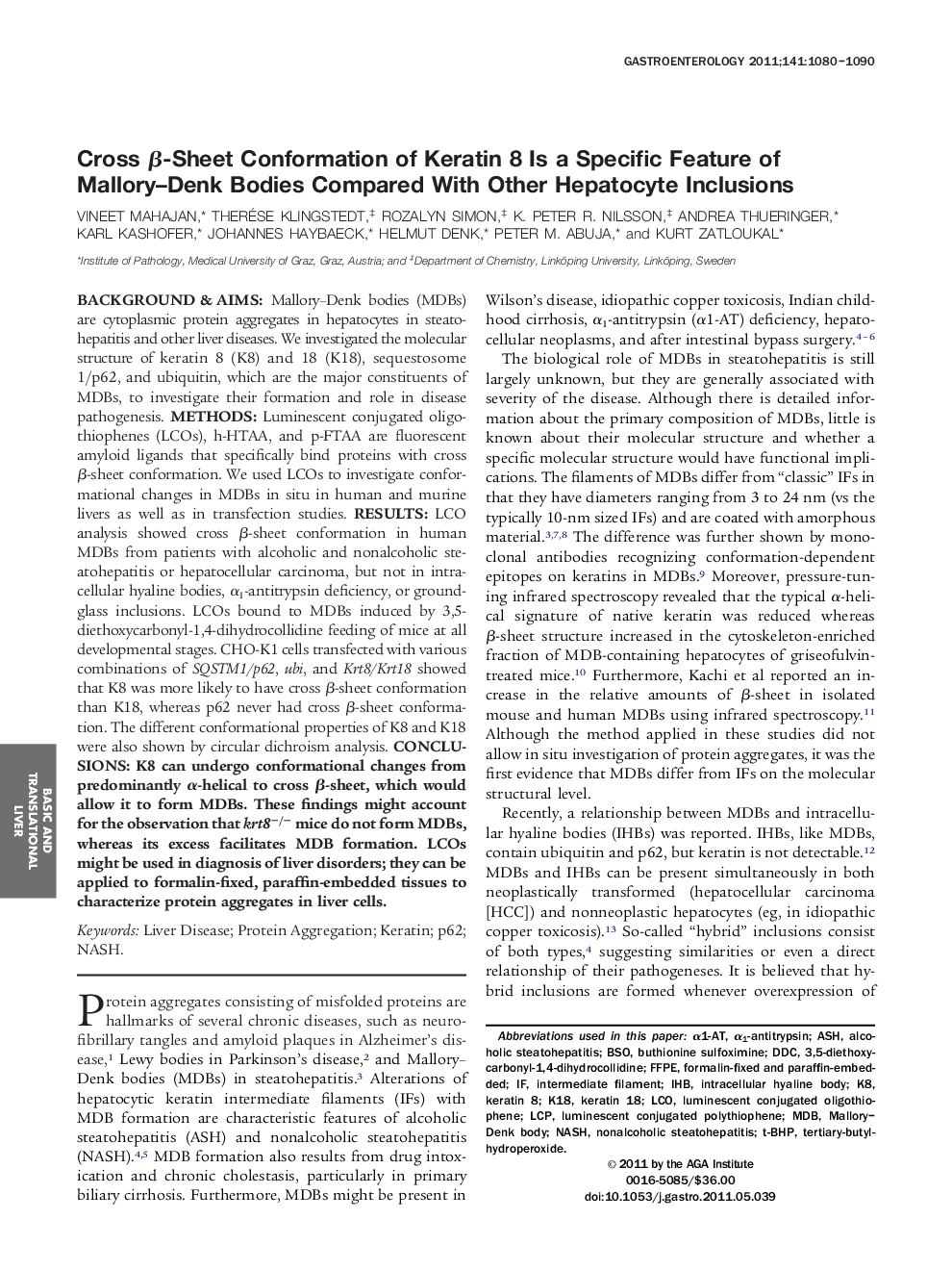| Article ID | Journal | Published Year | Pages | File Type |
|---|---|---|---|---|
| 3296175 | Gastroenterology | 2011 | 18 Pages |
Abstract
K8 can undergo conformational changes from predominantly α-helical to cross β-sheet, which would allow it to form MDBs. These findings might account for the observation that krt8â/â mice do not form MDBs, whereas its excess facilitates MDB formation. LCOs might be used in diagnosis of liver disorders; they can be applied to formalin-fixed, paraffin-embedded tissues to characterize protein aggregates in liver cells.
Keywords
BSOα1-ATIHBMallory–Denk bodyα1-antitrypsinLCPLCOp62MDBK183,5-diethoxycarbonyl-1,4-dihydrocollidineddCFFPEt-BHPalcoholic steatohepatitisnonalcoholic steatohepatitisbuthionine sulfoximineLiver diseaseprotein aggregationAshintermediate filamentformalin-fixed and paraffin-embeddedNash Keratinkeratin 18keratin 8
Related Topics
Health Sciences
Medicine and Dentistry
Gastroenterology
Authors
Vineet Mahajan, Therése Klingstedt, Rozalyn Simon, K. Peter R. Nilsson, Andrea Thueringer, Karl Kashofer, Johannes Haybaeck, Helmut Denk, Peter M. Abuja, Kurt Zatloukal,
